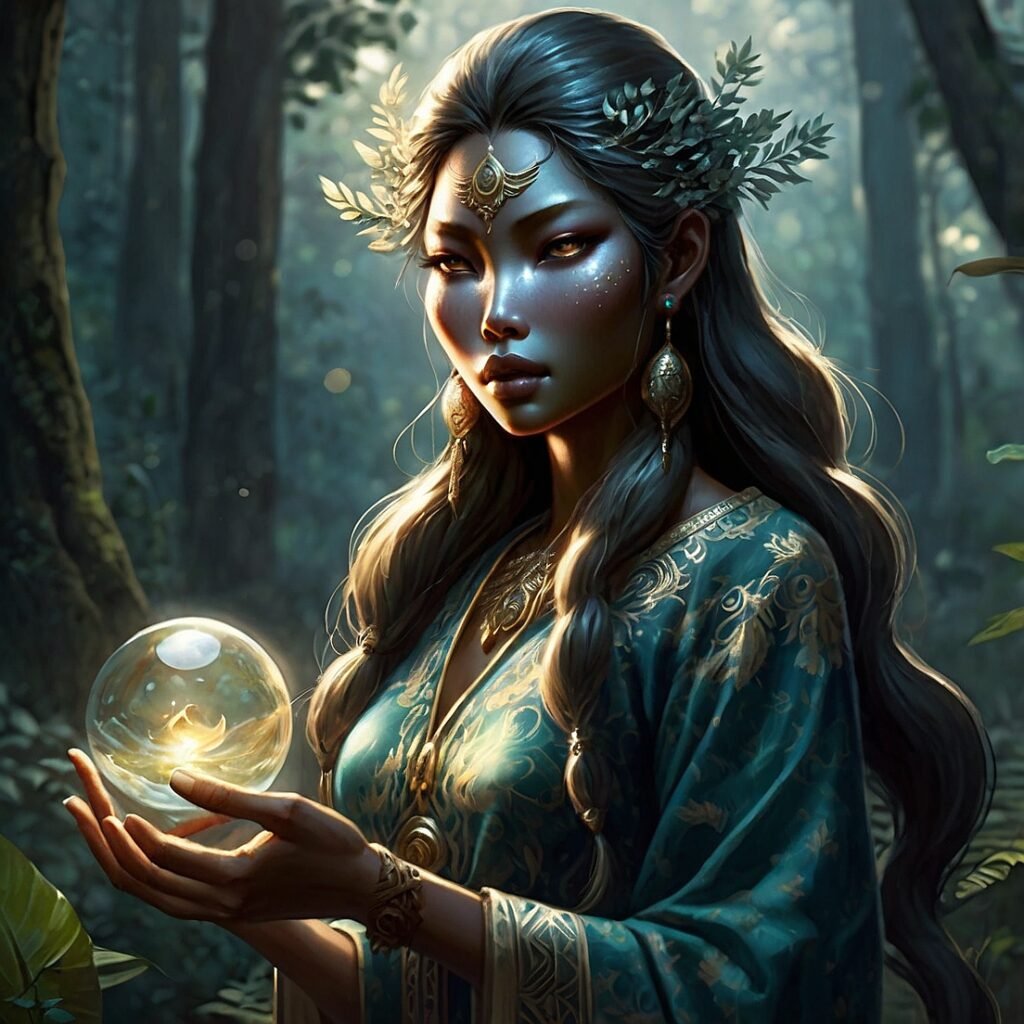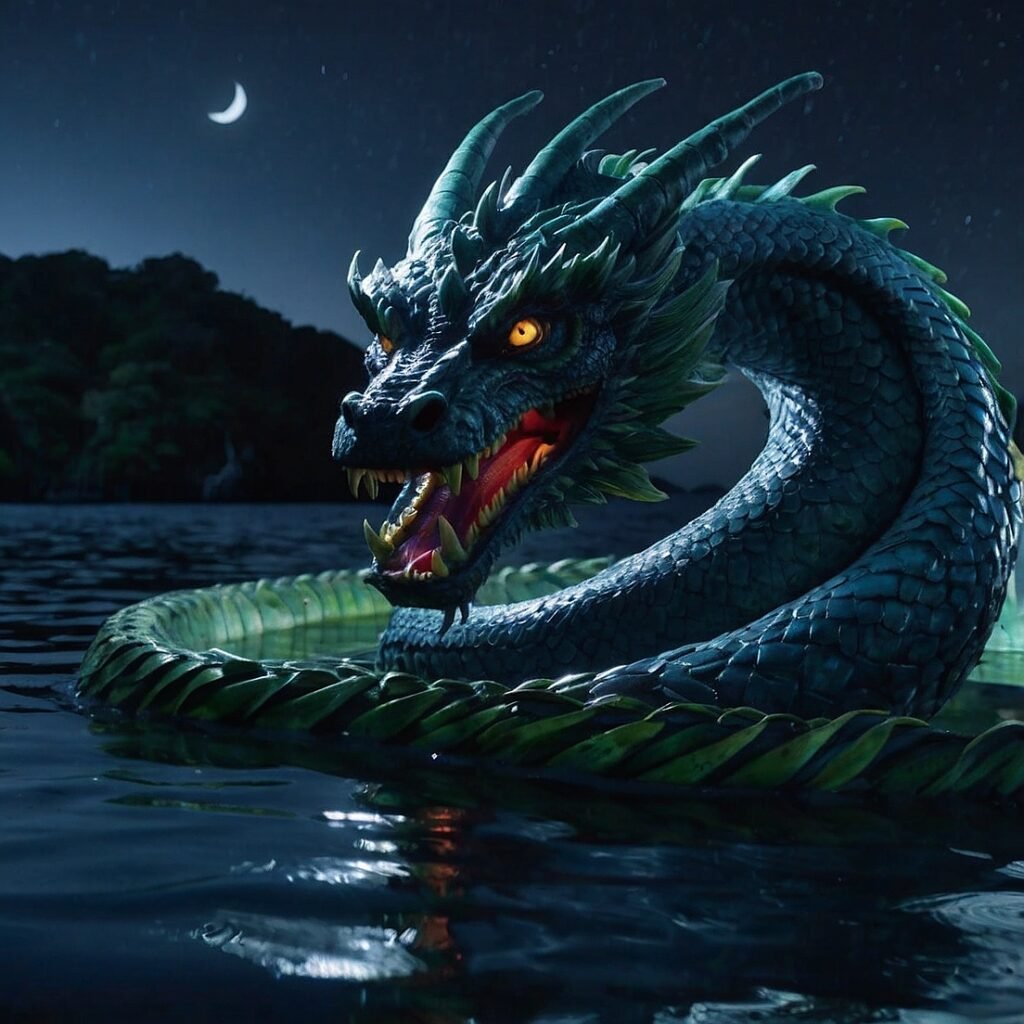The rich tapestry of Filipino folklore is adorned with a myriad of mystical beings, but few capture the imagination quite like the diwata. These enchanting nature spirits occupy a central role in the mythological landscape of the Philippines, embodying the essence of the natural world and serving as intermediaries between mortals and the divine. Diwata, often compared to fairies or nymphs in Western mythology, are far more complex and deeply rooted in the Filipino cultural psyche. They are not mere supernatural entities but represent a profound connection between the Filipino people and their environment, reflecting the archipelago’s lush biodiversity and the animistic beliefs that predate colonial influences. This exploration delves into the origins, characteristics, and enduring significance of diwata in Filipino folklore, shedding light on their role in shaping the nation’s cultural identity and spiritual practices.
Origins and Etymology of Diwata
The term “diwata” has a fascinating linguistic journey that mirrors the complex history of the Philippine archipelago. Its roots can be traced back to the Sanskrit word “devata,” meaning “deity” or “divine being.” This Sanskrit connection underscores the profound influence of Indian culture on pre-colonial Philippines, likely transmitted through trade and cultural exchanges with neighboring Southeast Asian kingdoms.
Linguistic Evolution:
- Sanskrit: devata (deity)
- Old Malay: dewata
- Tagalog/Filipino: diwata
As the concept traveled across maritime Southeast Asia, it underwent subtle transformations, adapting to local beliefs and cultural contexts. In the Philippines, the diwata became intimately associated with nature, embodying the spirit of forests, mountains, rivers, and other natural phenomena. This evolution reflects the Filipino people’s deep reverence for the natural world and their belief in the interconnectedness of all living things.
The concept of diwata is not uniform across the Philippines, given the country’s diverse ethnic and linguistic landscape. Different regions and ethnic groups have their own variations and interpretations of these nature spirits, often with localized names and specific attributes. For instance, in the Visayan regions, diwata are sometimes referred to as “engkanto” or “encantada,” terms that show Spanish influence but still retain the core concept of nature spirits.
Characteristics and Appearance of Diwata
Diwata are typically portrayed as ethereal, beautiful beings with an otherworldly aura. Their appearance often reflects the natural elements they are associated with, blending human and nature-inspired features. While descriptions can vary across different Filipino cultures, some common attributes are widely recognized.
Physical Attributes:
- Exceptional beauty
- Glowing or luminous skin
- Long, flowing hair (often described as golden or adorned with flowers)
- Elegant, flowing garments reminiscent of natural elements
Diwata are often depicted as having an ability to change their appearance or become invisible at will, adding to their mystique and elusive nature. Some accounts describe them as having slightly non-human features, such as unusually colored eyes or the absence of a philtrum (the vertical groove between the upper lip and nose), which is believed to be a sign of their supernatural origin.
The gender of diwata is predominantly female in most folklore, though male diwata (sometimes called “engkanto” specifically for males) are not unheard of. This female predominance may reflect the association of diwata with fertility, nurturing aspects of nature, and the feminine divine in pre-colonial Filipino spirituality.
Types of Diwata and Their Domains
Diwata are as diverse as the natural world they inhabit, with different types associated with specific elements, locations, or natural phenomena. This classification system reflects the Filipino people’s nuanced understanding of their environment and the spiritual forces believed to govern various aspects of nature.
| Type of Diwata | Domain | Characteristics |
|---|---|---|
| Maria Makiling | Mount Makiling, Laguna | Guardian of the mountain, associated with mists and hidden treasures |
| Maria Sinukuan | Mount Arayat, Pampanga | Protector of animals, punishes those who harm nature |
| Maria Cacao | Cebu mountains | Associated with cacao plantations, controls river floods |
| Magwayen | Seas and oceans | Guides souls of the dead across the sea to the afterlife |
| Idianale | Agriculture and animal husbandry | Teaches humans farming and animal care |
| Mananangal | Forests and dark places | Often portrayed as more malevolent, associated with sickness |
These examples represent just a fraction of the diwata types recognized across different Filipino cultures. Each region often has its own local diwata, tied to specific geographical features or natural phenomena important to the local community. This localization of diwata lore demonstrates the deep connection between Filipino spiritual beliefs and their immediate environment.
Role of Diwata in Filipino Folklore and Culture
Diwata play a multifaceted role in Filipino folklore and culture, serving as protectors, benefactors, and sometimes as cautionary figures. Their presence in stories and beliefs reflects the complex relationship between humans and nature in Filipino worldview.
Protectors of Nature:
Diwata are often portrayed as guardians of the natural world, protecting forests, mountains, rivers, and other ecosystems from human exploitation. Stories abound of diwata punishing those who disrespect or damage nature, often through magical means such as causing individuals to become lost in the forest or afflicting them with illness.
Benefactors to Humans:
In many tales, diwata are benevolent beings who offer assistance to humans, particularly those who show respect for nature. They may bestow gifts, teach valuable skills, or provide guidance in times of need. For example, the diwata Maria Makiling is said to have taught the people of Laguna medicinal practices using plants from her mountain.
Mediators Between Realms:
Diwata are often seen as intermediaries between the human world and the divine or spiritual realm. They may carry messages, intercede on behalf of humans, or guide souls in the afterlife. This role underscores their liminal nature, existing between the mundane and the supernatural.
Cultural Identity and Environmental Consciousness:
The enduring presence of diwata in Filipino folklore serves as a cornerstone of cultural identity, particularly in relation to the natural environment. These stories instill a sense of reverence for nature and promote environmental stewardship, reminding Filipinos of their deep connection to the land and its spirits.
Diwata in Pre-colonial Filipino Spirituality
Before the arrival of Spanish colonizers and the introduction of Christianity, the belief in diwata was an integral part of the animistic spirituality practiced across the Philippine archipelago. This belief system, known as Anitism, recognized the presence of spirits in all aspects of the natural world and daily life.
Spiritual Hierarchy:
In pre-colonial Filipino spirituality, diwata occupied a significant position in the spiritual hierarchy:
- Supreme Deities (e.g., Bathala in Tagalog mythology)
- Lesser Gods and Goddesses
- Diwata and Nature Spirits
- Ancestral Spirits
- Malevolent Spirits
This hierarchy demonstrates the important intermediary role of diwata between humans and higher deities. They were seen as more accessible than supreme gods and were often the focus of daily spiritual practices and offerings.
Rituals and Offerings:
Pre-colonial Filipinos engaged in various rituals to honor and appease diwata. These practices often involved:
- Offering food and other gifts at sacred natural sites
- Performing dances and music to please the spirits
- Seeking permission before entering forests or climbing mountains
- Consulting spiritual mediums (babaylan or katalonan) to communicate with diwata
These rituals reinforced the reciprocal relationship between humans and nature spirits, emphasizing respect, gratitude, and stewardship of the natural world.
Impact of Colonization on Diwata Beliefs
The arrival of Spanish colonizers in the 16th century and the subsequent introduction of Christianity had a profound impact on traditional Filipino beliefs, including those surrounding diwata. This period marked a significant shift in the religious and cultural landscape of the Philippines, leading to a complex interplay between indigenous beliefs and the newly imposed Christian doctrine.
Suppression and Syncretism:
Spanish missionaries actively sought to suppress indigenous spiritual practices, viewing them as pagan and incompatible with Christianity. However, the deeply ingrained nature of diwata beliefs led to various forms of religious syncretism:
- Some diwata were recast as saints or angels within a Christian framework
- Traditional rituals were adapted to incorporate Christian elements
- Stories of diwata were sometimes blended with Christian narratives
Survival in Folk Catholicism:
Despite official suppression, beliefs in diwata and other indigenous spirits persisted, often finding expression within the context of Folk Catholicism. This uniquely Filipino form of Catholicism incorporates elements of pre-colonial spirituality, allowing for the continued, albeit modified, presence of diwata in Filipino cultural consciousness.
Transformation of Perception:
The colonial period saw a gradual shift in how diwata were perceived:
- Pre-colonial era: Revered nature spirits and intermediaries with the divine
- Colonial era: Often recast as potentially dangerous or deceptive entities
- Modern era: Viewed as cultural symbols, folklore characters, or metaphors for nature
This transformation reflects the complex process of cultural negotiation and adaptation that characterized the colonial and post-colonial Filipino experience.
Diwata in Modern Filipino Culture
Despite centuries of cultural change and modernization, diwata continue to hold a significant place in contemporary Filipino culture. Their presence is felt across various aspects of society, from literature and arts to environmental advocacy and cultural identity.
Literature and Media:
Diwata feature prominently in modern Filipino literature, film, and television:
- Novels and short stories often incorporate diwata as central characters or plot elements
- Filipino fantasy and speculative fiction frequently draw upon diwata lore
- Television shows and movies explore diwata themes, often blending traditional folklore with contemporary storytelling
Visual Arts:
Filipino artists continue to find inspiration in diwata, creating works that reinterpret these nature spirits for modern audiences:
- Paintings and sculptures depicting diwata are common in galleries and public spaces
- Digital art and illustrations often feature diwata, particularly in fantasy and gaming contexts
- Traditional crafts sometimes incorporate diwata motifs, connecting modern artisans with ancestral traditions
Environmental Advocacy:
The concept of diwata has been embraced by environmental movements in the Philippines:
- Diwata symbolism is used to promote conservation efforts and respect for nature
- Environmental education programs often incorporate diwata stories to teach ecological principles
- Some activist groups invoke the protective spirit of diwata in their campaigns against deforestation and pollution
Cultural Identity:
For many Filipinos, diwata represent a connection to their pre-colonial heritage:
- Cultural festivals and events often feature diwata-themed performances and displays
- Some Filipinos, particularly those interested in reviving indigenous spirituality, incorporate diwata beliefs into their personal practices
- Diwata serve as symbols of Filipino cultural uniqueness on the global stage
Diwata in Comparative Mythology
The concept of nature spirits like diwata is not unique to Filipino folklore. Similar entities can be found in mythologies around the world, particularly in cultures with strong animistic traditions. Comparing diwata to these analogous beings provides insight into the universal human tendency to personify natural forces and the specific cultural contexts that shape these beliefs.
| Culture | Nature Spirit | Similarities to Diwata | Differences |
|---|---|---|---|
| Greek | Nymphs | Associated with specific natural features, often female | More standardized hierarchy and roles |
| Celtic | Fairies/Sidhe | Inhabit natural spaces, can be benevolent or mischievous | Often smaller in size, more diverse in appearance |
| Japanese | Kami | Represent natural forces, revered in local traditions | More formalized worship, broader concept of divinity |
| Native American | Nature Spirits | Protect natural resources, teach humans | Highly diverse across different tribes, often animal-like |
| Hindu | Devas | Divine beings, some associated with nature | More structured pantheon, often with cosmic roles |
This comparative perspective highlights both the universality of nature spirit concepts and the unique characteristics of diwata in Filipino folklore. While sharing some common themes with other mythological beings, diwata remain distinctly Filipino in their specific attributes, stories, and cultural significance.
Diwata in Filipino Diaspora and Global Context
As Filipino communities have spread across the globe, the concept of diwata has traveled with them, adapting to new contexts and finding relevance in diverse cultural landscapes. This global dispersion of Filipino folklore has led to interesting developments in how diwata are perceived and represented.
Diaspora Communities:
Filipino immigrants often maintain connections to their cultural heritage through stories and beliefs about diwata:
- Community events and cultural programs in diaspora settings may feature diwata-themed content
- Parents and grandparents pass down diwata stories to younger generations, preserving cultural ties
- Some diaspora Filipinos incorporate diwata concepts into their artistic or literary works, creating hybrid cultural expressions
Global Cultural Exchange:
The concept of diwata has begun to enter the global cultural consciousness:
- International fantasy literature and media sometimes incorporate diwata or diwata-inspired characters
- Cross-cultural artistic collaborations have led to new interpretations of diwata in global contexts
- Academic interest in Filipino folklore has brought diwata into comparative mythology and anthropological discussions
Digital Age and Social Media:
The internet and social media have provided new platforms for sharing and discussing diwata lore:
- Online forums and social media groups dedicated to Filipino folklore facilitate global discussions about diwata
- Digital art platforms showcase modern interpretations of diwata, reaching international audiences
- Educational content about diwata is shared widely, contributing to cultural preservation and global awareness
This global context demonstrates the enduring appeal and adaptability of diwata concepts, showing how traditional folklore can remain relevant and vibrant in an interconnected world.
The Enduring Legacy of Diwata in Filipino Culture
The diwata of Filipino folklore represent far more than mere mythological beings; they embody a profound connection between the Filipino people and their natural environment, a link that has endured through centuries of cultural change and modernization. From their origins in pre-colonial animistic beliefs to their present-day manifestations in literature, art, and environmental advocacy, diwata continue to play a significant role in shaping Filipino cultural identity.
The persistence of diwata in Filipino consciousness speaks to the resilience of indigenous beliefs and the human need for spiritual connection with the natural world. In an era of rapid urbanization and environmental challenges, the concept of diwata serves as a poignant reminder of the importance of respecting and preserving nature. It offers a uniquely Filipino perspective on environmental stewardship, blending traditional wisdom with contemporary concerns.
Moreover, the global spread of diwata lore through diaspora communities and cultural exchange demonstrates the universal appeal of these nature spirits. As Filipino culture continues to engage with the wider world, diwata stand as ambassadors of a rich folkloric tradition, inviting people of all backgrounds to appreciate the beauty and complexity of Filipino mythology.
In conclusion, the diwata remain an integral part of the Filipino cultural landscape, bridging past and present, tradition and modernity. They continue to enchant, inspire, and remind us of the deep, enduring bonds between humanity and the natural world, ensuring that the spirits of nature will continue to dance through Filipino hearts and imaginations for generations to come.
Disclaimer: This article presents information on diwata based on available folklore, cultural studies, and historical records. Given the nature of oral traditions and the diversity of Filipino cultures, some details may vary across different regions or sources. We encourage readers to approach this topic with an open mind and to respect the cultural significance of these beliefs. If you notice any inaccuracies or have additional information to contribute, please contact us so we can ensure the most comprehensive and accurate representation of this important aspect of Filipino cultural heritage.




